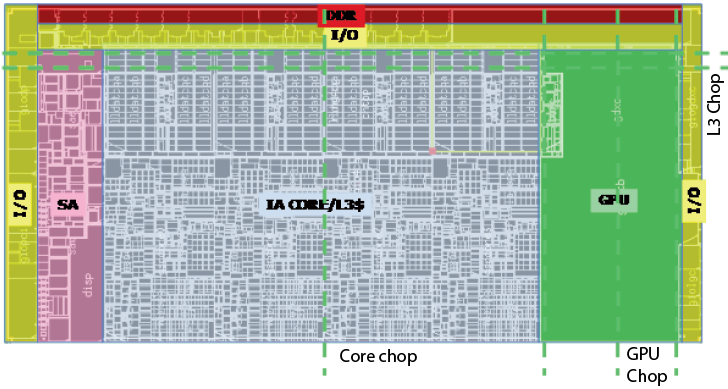- Mar 27, 2009
- 12,968
- 221
- 106
I was talking hypothetically, why dedicate a large die size area for a worthless 128 Shader iGPU ??? APUs are all about iGPU performance, smallest Kaveri APU already has 256 Shaders (A6-7400K) at 28nm, why spend money/resources for a 14nm 128 Shader iGPU ?? Not worth it.
Right now I have three Jaguar SOCs (E1-2100, Sempron 2650, Athlon 5350) and IMO they all have too much iGPU relative to the CPU.
For example, my Athlon 5350 in Team Fortress 2 @ 1080p low will get avg. FPS somewhere over 30 FPS, but it will still chug in the low 20's. Lowering resolution doesn't help that problem whatsoever due to CPU bottleneck.
So instead of four Jaguar cores and 128sp iGPU, I would like to see something with more CPU grunt. Replacing four Jaguar cores with four Zen cores would be ideal IMO. And for non-gamers (and gamers that use dGPU) having extra CPU will be of greater benefit than adding more iGPU.
P.S. Here were my test notes on Athlon 5350 and Team Fortress 2 from last year:
http://forums.anandtech.com/showpost.php?p=36794469&postcount=287
I'm done with the first phase of multiplayer testing for Athlon 5350 on Team Fortress 2.
(This phase involved changing resolution with the lowest detail settings being used as a constant.)
Some basic observations:
1. The game appears to spread the load out primarily to three cpu cores. (Activity does exist on core four, but it is extremely light)
2. Some player character classes appear to stress the game more than others. For example, I seem to get the lowest frame rates while playing the Scout.
3. According to FRAPS minimum frame rates have dropped to as low as 16 on multiple logs. I have tested this on resolutions as low as 800 x 600 with lowest settings and it still happens.
4. Determining average frame rate is extremely difficult because once my player dies (and I am waiting to respawn) the frame rate shoots up much higher than what it was in game. With that mentioned, average frame rate appears to be > 30 FPS up to 1920 x 1080 (lowest settings). Some variation in average FPS appears to be dependent on map and number of players.
Overall, I will give the Athlon 5350 a pass (for casual gamers) on Team Fortress 2 up to 1920 x 1080 (lowest settings). However, the minimum frame rates reported by FRAPs can be alarmingly low. As I have mentioned, lowering resolution does not help the reported minimums. Ideally I would like to see AM1 with a higher clock on the CPU in order to help the minimum FPS.
Last edited:



